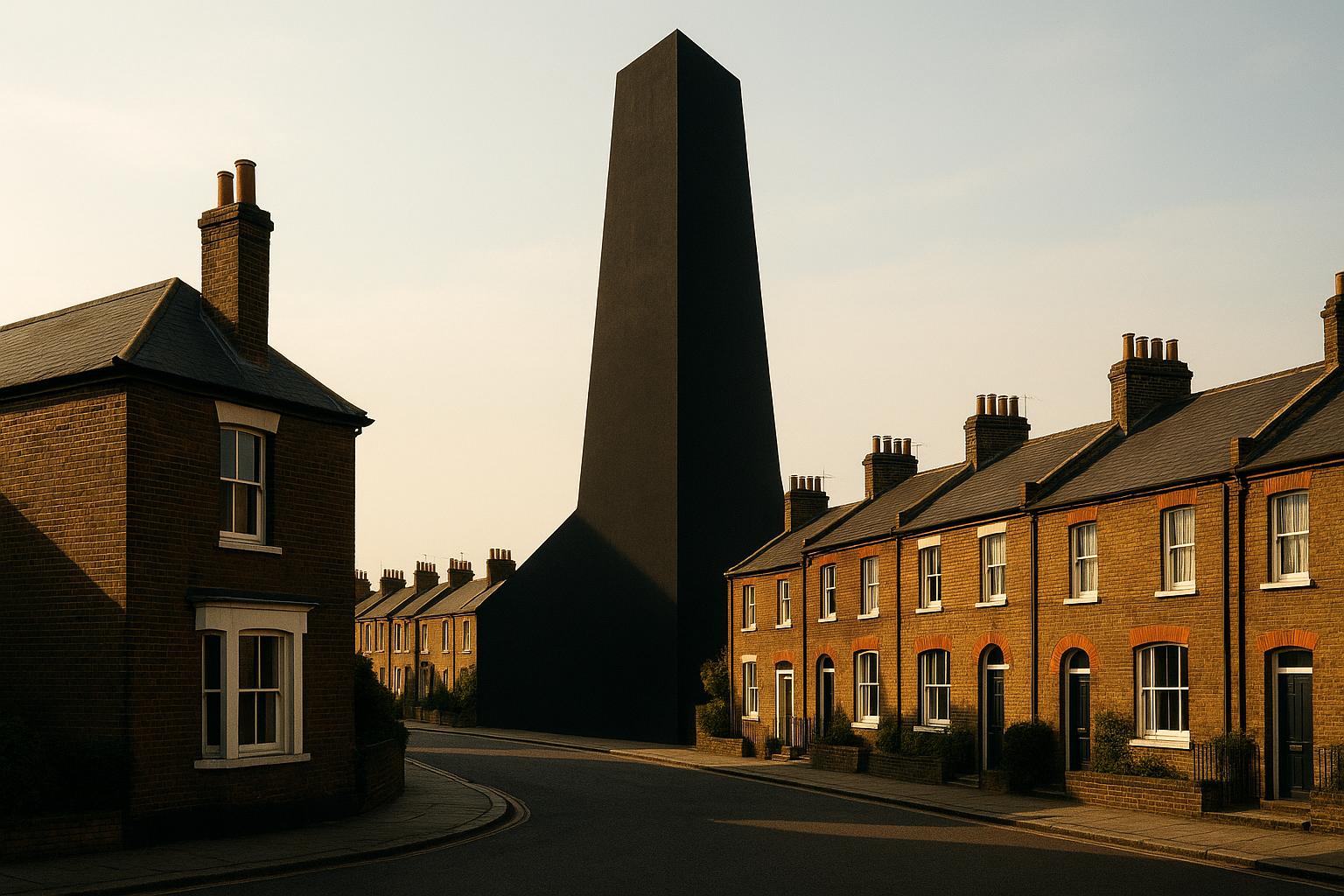Local architectural firm Owain Williams Architects has transformed a modest disused garage site in London into the Stroud Green Housing Centre, a striking new headquarters for the Stroud Green Housing Co-Operative. Occupying a mere 38 square metres near Finsbury Park, the project replaces the cooperative’s cramped former premises with a thoughtfully designed civic building that belies its small scale through a compelling sense of monumentality. The building functions as an accessible public drop-in space and office, demonstrating how architectural ingenuity can extend the utility of limited urban sites while fostering community engagement.
Situated between terraced houses, the centre is raised on a concrete plinth and clad in Scottish larch timber, echoing the texture and tone of nearby garden fences to integrate sensitively within its residential context. The façade features a large window and a prominent timber gate, which remains fixed open during weekdays to welcome visitors. This wide gate leads to a unique entrance vestibule characterised by a mirrored ceiling and floor-to-ceiling glazing, designed to visually connect the interior and exterior, effectively extending the public street into the building itself. This sequence of entry creates a heightened sense of occasion, with founder Owain Williams describing the gesture as giving the building “presence and a sense of waking up each morning and being put to bed each night.”
Inside, the centre benefits from a flexible, double-height open plan space illuminated by clerestory windows. The elevated rear section of the building allows natural light to flood the interior, enhancing the feeling of spaciousness despite the site’s restricted footprint. A consistent palette includes white walls, grey timber panelling, and teal and mint green vinyl flooring, producing a calm yet vibrant atmosphere that supports both office work and community activities such as drop-in clinics and meetings. Practical amenities include a kitchenette and bathroom at the rear, lit by circular skylights and finished in pale cream tones, with built-in storage cleverly demarcating this service area from the main space.
Accessibility is a key element of the design, with a generously sized accessible toilet and a level threshold directly from the street, ensuring ease of use for all visitors. The project neatly balances the dual identity of the building as both a civic landmark and a highly functional workspace. In doing so, it challenges architectural conventions by positing how small in scale a "monumental" building can be, proving that meaningful civic architecture need not be grandiose in size but rather measured in its community impact and thoughtful design gestures.
The Stroud Green Housing Centre exemplifies a growing trend in urban infill projects that prioritise community utility and architectural presence on constrained sites. It sits alongside other innovative London developments such as Peckham’s mixed-use infill by Cuozzo.Company, showcasing a resourceful approach to maximizing limited space within dense urban fabrics. Photography by French + Tye captures the centre’s inherent qualities, revealing how the interplay of natural light, materiality, and spatial organisation yield a refined yet approachable environment.
Owain Williams Architects’ creation stands as a testament to how modest structures can be transformed into purposeful civic spaces that enrich neighbourhood life. By embodying the values of community, resourcefulness, and aspiration within its compact footprint, the Stroud Green Housing Centre reveals the potential of architecture to foster connection and identity in even the smallest of urban interventions.
📌 Reference Map:
- Paragraph 1 – [1] (Dezeen), [3] (Archilovers)
- Paragraph 2 – [1] (Dezeen), [3] (Archilovers), [5] (Architecture & Design Community)
- Paragraph 3 – [1] (Dezeen), [4] (ArchDaily), [6] (Architecture Today)
- Paragraph 4 – [3] (Archilovers), [7] (e-architect)
- Paragraph 5 – [1] (Dezeen), [2] (Dezeen), [5] (Architecture & Design Community)
- Paragraph 6 – [1] (Dezeen), [3] (Archilovers), [4] (ArchDaily)
Source: Noah Wire Services
